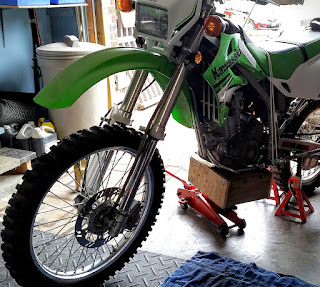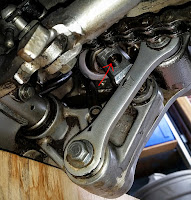| Around the horn on local bike shops |
I recently took a little road trip to local bike shops, two of which I hadn’t been to yet. So far I’ve been a diligent Royal Distributing  customer, they are closest and offer a big selection. It’s pretty much serve yourself, and the kids working there don’t seem to know too much about riding as opposed to selling stuff. They also tend toward cheaper, mainstream gear.
customer, they are closest and offer a big selection. It’s pretty much serve yourself, and the kids working there don’t seem to know too much about riding as opposed to selling stuff. They also tend toward cheaper, mainstream gear.
To expand my options I thought I’d drop by A Vicious Cycle in New Dundee (great name) and Tri-City Cycle in Waterloo.
A Vicious Cycle had knowledgeable guys on the counter who were less focused on a quick sale than giving me good advice. They knew what they were talking about and took the time to figure out what I needed (as opposed to what I’d seen online). I think I might have found my new favorite bike shop.
Tri-City Cycle is a motorbike dealer, so the main building is all about selling bikes. There is a small room in a building in the back that sells gear, but I found the selection quite limited and the vibe was quick sell, though the guy there did know of what he spoke. Like Royal Distributing, Tri-City has a more mass market vibe; it was stuffed with product moving through.
 |
| My new favorite |
A Vicious Cycle (which I never get tired of saying) was clean, well stocked but organized and, as mentioned, the sales support was excellent. I’m going to go for the Macna summer pants they have on offer. They seem to be of excellent quality and are by a European manufacturer that aren’t the same same old brands pushed everywhere else. Most importantly, the knowledgeable and patient sales guy took the time to show me a pair and how they work.
I’d never suggest going to a single retailer for all your gear. At various times different retailers will have what you’re looking for on sale or on hand, but when you find a place that you like, it’s nice to know you have a first go-to that won’t let you down.
Follow Up
I got the Macna summer pants and they are excellent. I ordered online, A Vicious Cycle sent me updates so I knew where things were in the delivery cycle, and I received my pants a day before they said I would. The pants themselves are very high quality and unique looking compared to the matt black look popular in North American gear. Unlike the Joe Rocket pants I tried which are far too long in the leg, the Macna’s fit me perfectly, off the rack. Between the the quality of the online service and quality of the product, I’m very happy with A Vicious Cycle.
.jpg) |
| The Triumph Tiger 800: the bike I’ll get hard luggage for |
Thanks to their honest advice about how much I’d need to put into getting a hard luggage rack that works well with the Ninja, I’ve decided to go with a tail bag and save the carrying gear for a future bike more suited to the task.
In the meantime, I can’t say enough about the quality of those Macna pants. They breath like crazy, even on hot sunny days, and because they aren’t black they reflect their share of heat as well. If you’re looking for a summer pant, these are excellent!














